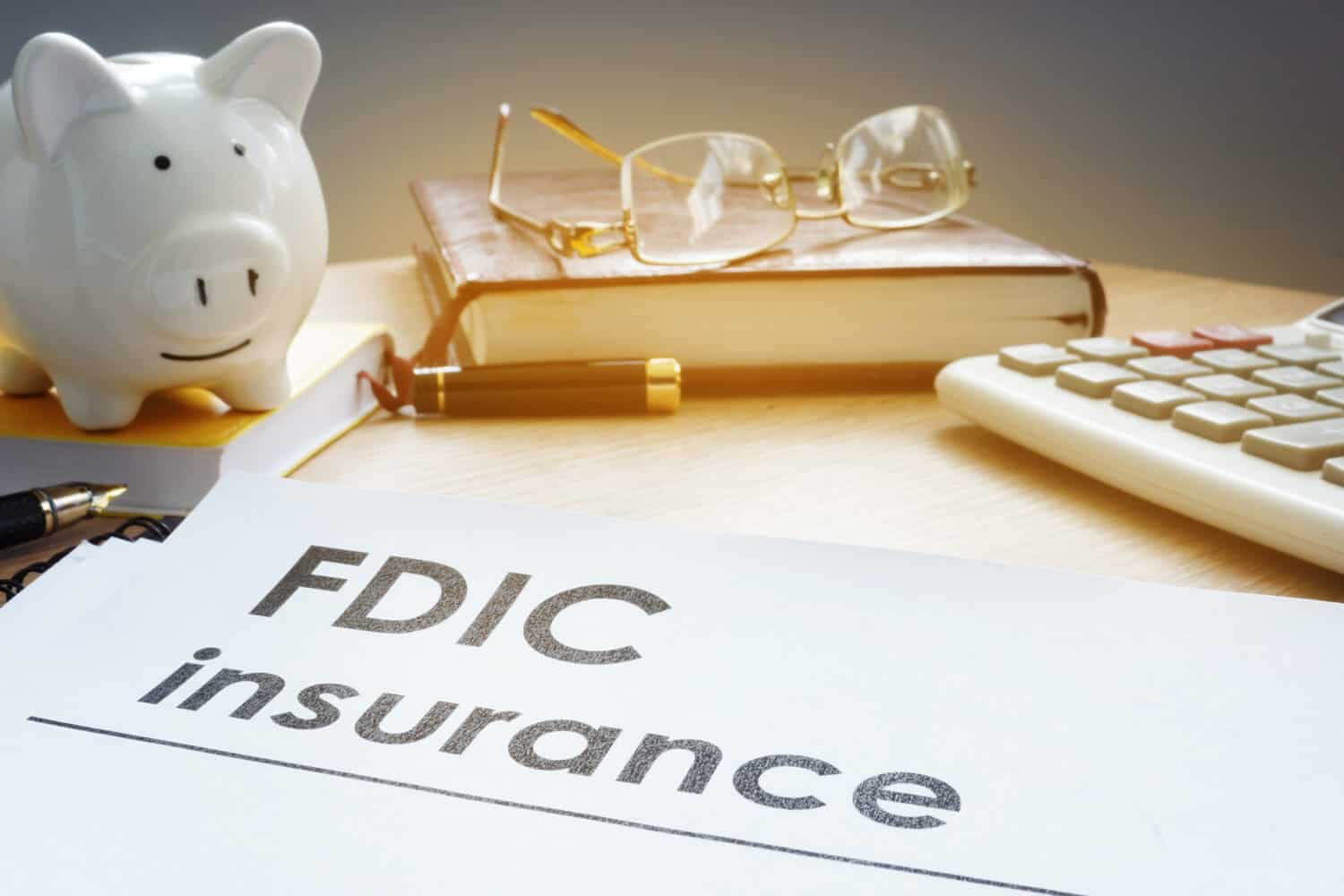
If you just opened an account with Charles Schwab or you’re considering its services, you’re probably wondering if your money would be protected should the institution fail.
The short answer: It depends.
But don’t fret. Charles Schwab Bank is a member of the FDIC or Federal Deposit Insurance Corporation.
The FDIC insures deposits $250,000 per depositor, per FDIC-insured bank, per ownership category.
What does the FDIC cover at Charles Schwab?

Deposit products from Schwab are FDIC insured up to the legal limits. These include the following.
- Checking accounts
- Savings accounts
- Certificates of deposit (CD)
- Money market deposit accounts
- Brokerage account cash held in the Bank Sweep feature (More about this later)
The FDIC protects eligible deposits up to $250,000 per depositor, per member-bank, per ownership category. The ownership category refers to who owns the account. For example, single or joint accounts.
So let’s say you’re single and you have $50,000 in a Schwab Bank checking account and $100,000 in a Schwab Bank savings account. And you have $10,000 in a CD held at a separate FDIC-insured bank. That means you have a total of $160,000 worth of FDIC coverage.
The FDIC insures these accounts up to the legal limits dollar-for-dollar, including principal plus any accrued interest through the date of the insured bank’s closing.
But remember, FDIC coverage kicks in after an FDIC-insured institution fails – meaning it can no longer pay interest on its deposits or meet its debt obligations.
Another point to keep in mind is that uninvested cash held in your Schwab brokerage account may be swept into one or more banks as part of what Schwab calls its Bank Sweep Feature. This may actually provide more FDIC insured coverage. Suppose your Schwab brokerage account holds $100,000 in cash you haven’t used to invest in securities yet.
That cash is likely being held in a partner FDIC-insured bank. Per FDIC rules, that brokerage cash is treated as an account with its own FDIC coverage. So if you have $100,000 in a Schwab checking account and $10,000 in univested brokerage cash at a partner FDIC-insured bank, you have $110,000 in FDIC coverage.
But not everything at Schwab is FDIC insured.
What’s not covered by the FDIC at Schwab?

Investment securities at Schwab or any other financial institution are not covered by the FDIC in the event of an institution’s collapse.
These include the following.
- Stocks
- Bonds
- Mutual funds
- Exchange-traded funds (ETFs)
- U.S. Treasury bills, bonds or notes
- Municipal securities
- Annuities
- Life insurance policies
- Safe deposit boxes and their contents
But if Charles Schwab & Co. fails, it doesn’t necessarily mean that you’ll no longer have access to your investments in your brokerage account or retirement plan like a Schwab individual retirement account (IRA), a Schwab Roth IRA or a Schwab 401(k) for individuals.
How Schwab protects your assets

Schwab keeps your fully paid securities separate from other firm assets and holds them at third party depository institutions and custodians including the Depository Trust Company and Bank of New York.
According to Schwab, “In the very unlikely event that Schwab should become insolvent, these segregated securities are not available to general creditors and are protected against creditors’ claims.”
Moreover, Schwab is a member of the Securities Investor Protection Corporation (SIPC).
What is SIPC and how does it work?

The SIPC is a nonprofit membership corporation established by federal statute in 1970.
The organization protects customers of SIPC-member broker-dealers when these institutions fail financially.
The SIPC covers investors up to $500,000 in securities including up to $250,000 in cash held in a brokerage account but not yet invested (Uninvested cash in a Schwab brokerage account is FDIC-insured if it’s in a cash-sweep program).
These are some covered securities at SIPC-insured brokerages.
- Stocks
- Bonds
- Treasury securities
- Mutual funds
- Money market mutual funds
SIPC coverage limits apply per customer. You may qualify for more coverage if your accounts with an SIPC-member broker are held at “separate capacities.”
Here are examples of accounts treated in separate capacities.
- Individual accounts
- Joint accounts
- Traditional IRAs
- Roth IRAs
- Trust accounts
- Corporate accounts
- Custodial accounts held by a guardian for a minor
So if you have an IRA and a Roth IRA account with Schwab, each gets $500,000 of SIPC coverage for a total of $1 million.
What you can expect at Schwab?

If you’re ready to open an account with Schwab, you can do more than just invest in a brokerage account. You can also apply for a Schwab credit card, which allows you to deposit rewards cash into your brokerage account.
And if you seek personalized guidance from financial advisors, you can see if Schwab Advisor Services is right for you. This program can help you with every aspect of your financial life from savings to retirement and estate planning. But if you want to invest in your child’s college education as soon as possible, you can explore the 529 Schwab college savings plan.
If you want to learn more about Schwab, check out our regularly-updated list of Charles Schwab guides, news and coverage.
Take This Retirement Quiz To Get Matched With An Advisor Now (Sponsored)
Are you ready for retirement? Planning for retirement can be overwhelming, that’s why it could be a good idea to speak to a fiduciary financial advisor about your goals today.
Start by taking this retirement quiz right here from SmartAsset that will match you with up to 3 financial advisors that serve your area and beyond in 5 minutes. Smart Asset is now matching over 50,000 people a month.
Click here now to get started.
Thank you for reading! Have some feedback for us?
Contact the 24/7 Wall St. editorial team.



